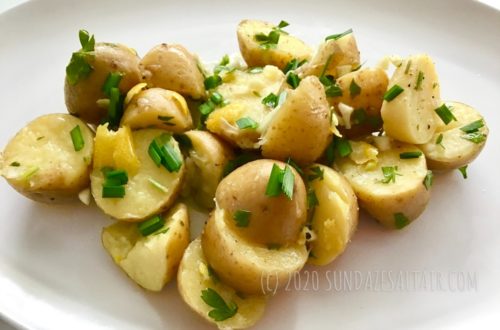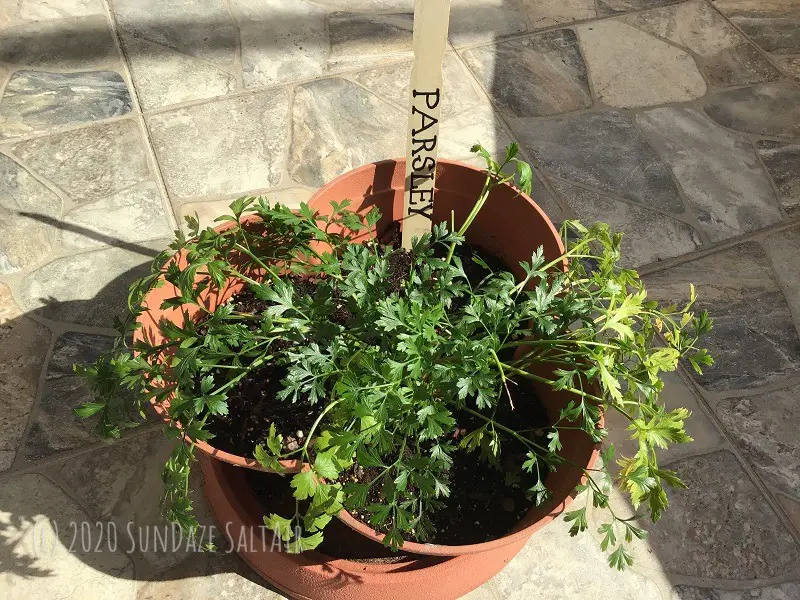
How To Grow Fresh Herbs Indoors This Winter
Bring Your Herbs Inside So They Thrive: Tips On How To Keep Your Indoor Herb Garden Alive This Winter
As the temperatures drop and the breezes turn brisk, it seems the time has come to bid our bountiful summer gardens adieu for now… But, wait… It doesn’t have to be this way — especially when it comes to our herb garden. Why leave your herbs outdoors in the ground to weather the long, cold winter? Most herbs can easily be potted, brought indoors and grown and enjoyed inside all winter long. Yes, you can still enjoy the scent and flavor of many fresh picked “summer” herbs in your dishes even in the dead of winter. So, if you want to enjoy fresh herbs and a sense of “summer” in your kitchen all winter long, make it happen with an easy kitchen herb garden. No need to wait until spring!
Let’s find out how easy it is to bring your outdoor summer herb garden indoors for a steady crop of fresh herbs even in the dead of winter….
“Potting is delightful work. There is nothing better for overwrought nerves than fifteen minutes or half an hour of having one’s fingers in the cool, rich earth…
-Frances Duncan, Ladies’ Home Journal
Can You Grow Herbs Successfully Indoors?
Most herbs that grow well in the ground will grow well in containers. Of course, growing indoors will come with some unique challenges that not every plant will meet. Just like some herbs are perennial and can live for years, while others are biennial or annual and will need to be re-sown every year.
However, bringing your herbs indoors to avoid a rough winter out in the elements will give them the best chance of survival. It also gives you the best chance to extend your herbs’ growing season and enjoy their harvest even into the darkest days of the year…
A Little Effort Can Bring Out The Best In Your Indoor Herbs
While some herb varieties will continue to produce an abundance of fresh green leaves for your soups, salads, stews, drinks and desserts almost effortlessly, others will require a bit more TLC and coaxing on your part to bloom. Your plants, after all, will have to adjust to a very different environment, as well as seasonal changes.
Despite the adjustment, with relatively minimal effort, you can bring out the best in your herbs by providing conditions that mimic their preferred growing conditions as much as possible in a climate-controlled home…
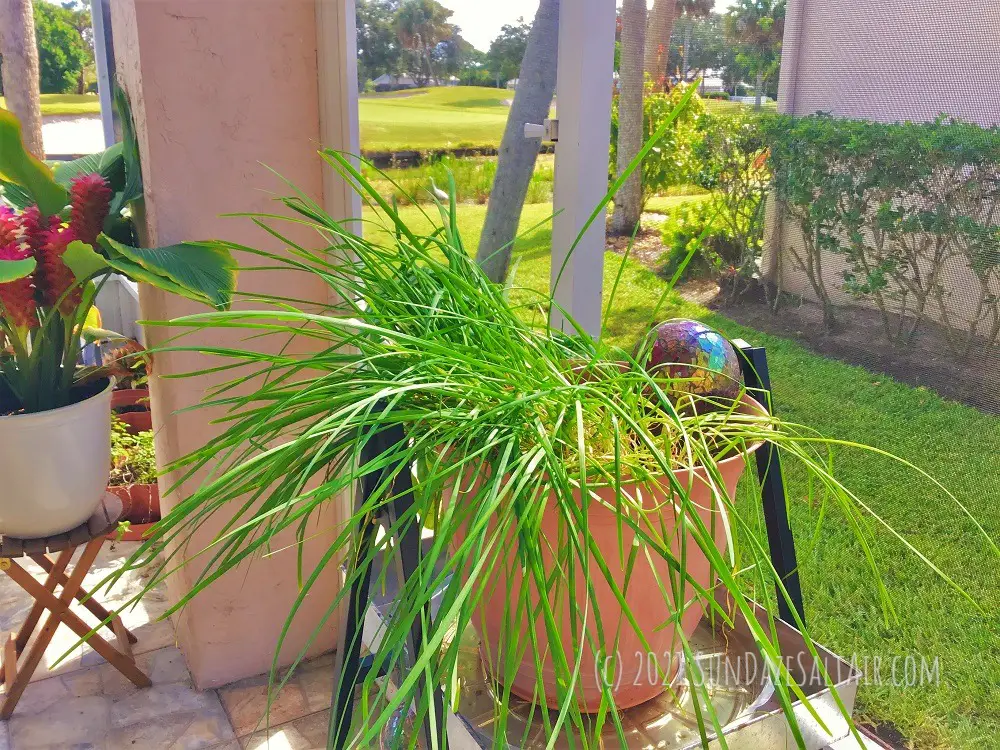
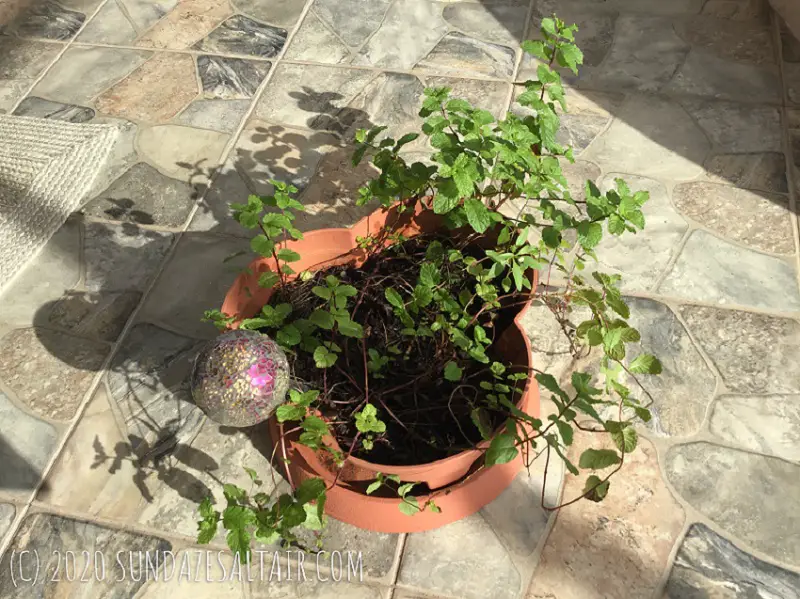
When Should You Relocate Your Herbs Indoors?
Of course, your best chance to preserve the most productivity from your herbs is is to relocate them when they are at their peak, and before any damage occurs from the first autumn frost. Find out the approximate date of the first fall frost in your area here.
Which Herbs Should You Move Inside For The Winter?
Relocate Your Perennial & Annual Herbs Indoors For The Winter
While many perennial herbs including mint, chives, rosemary, savory, thyme and oregano may be able to survive winter outdoors in their dormant phase, that is not always the case if you happen to have a very cold winter. If you anticipate a rough winter, to ensure your herbs’ survival, you will want to dig up your herbs before the first frost and pot them according to the container guidelines below.
TIP! Mint, thyme and oregano have relatively shallow roots and are especially easy to dig up and pot and adapt well to growing indoors.
Where Should You Place Your Perennial Herbs Indoors Over Winter?
You should have success cultivating perennial herbs such as chives, thyme, bay leaves, rosemary, oregano, winter savory and sage on or near a bright indoor window sill. The versatile mint should also do just fine on a slightly more shady window sill.
TIP! Some Perennials Need A Rest Period
If you notice your perennial herbs struggling, don’t be too alarmed… Some perennials do need a “rest” period, without which they may lose all their leaves and stop growing. To encourage them to grow again, try reducing their water by half. Yes, in their “dormant” winter state, they will prefer less water. Continue this reduced watering routine until you see new growth begin to sprout.
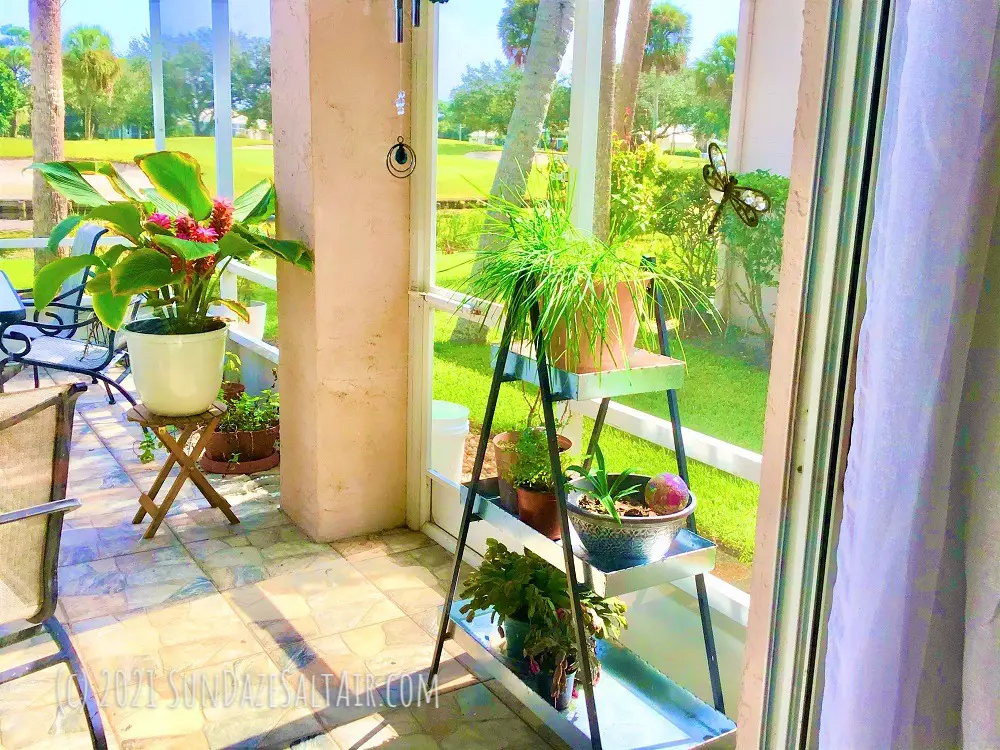
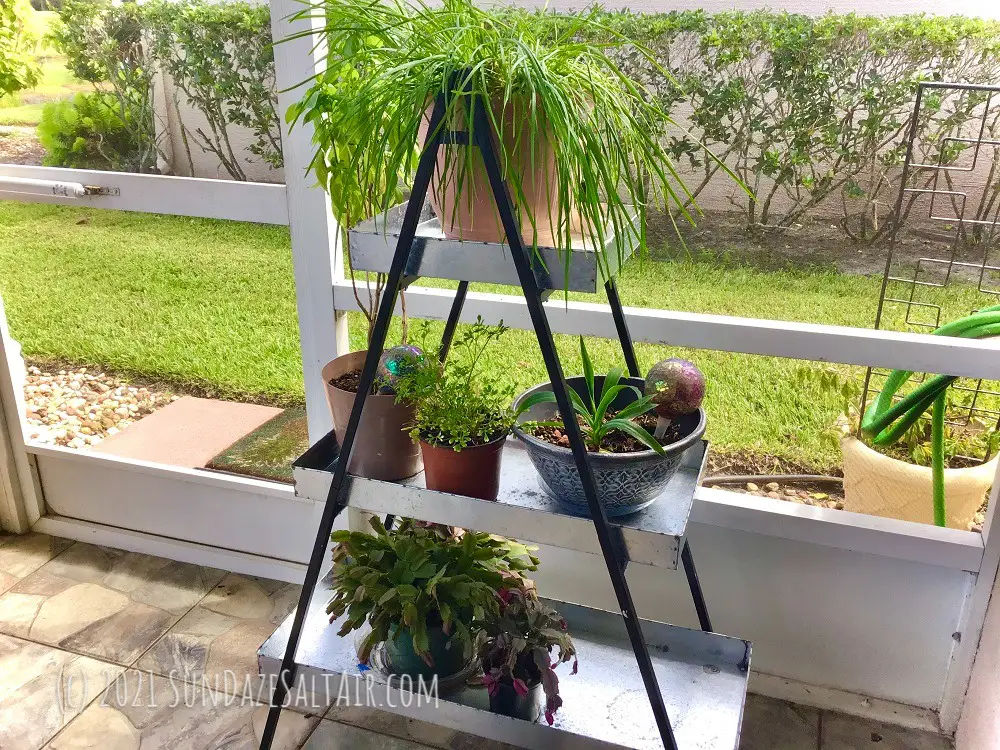
Move Annual Herbs Indoors Over Winter – Your Best Bet To Enjoy A Long Harvest
Annuals like basil, dill, nasturtium and coriander should be brought inside, as well as parsley, a biennial. These herbs are sensitive to drops in temperature and will not survive harsh winter conditions.
Actually, your best chance at enjoying maximum production of a biennial herb like parsley or an annual such as basil is to bring them indoors to weather the winter. Place them on or near a bright, sunny, Southern-facing window where they may not just survive but thrive. An East or West-facing window can also supply some much-needed winter light.
Bottom-line: Providing indoor shelter over the winter is the best way to get the most of annual or biennial herbs and enjoy a prolific harvest of fresh parsley sprigs or basil leaves all season long.
Start to Sow Seeds Inside During The Winter
Of course, you may also want to start some annuals from seed during the winter. Consider starting dill, chervil, fennel or coriander in small pots now so they are ready to be transplanted outdoors by the time spring arrives.
TIP! To encourage new growth, give your plants a good & thorough pruning, cutting old growth back significantly.
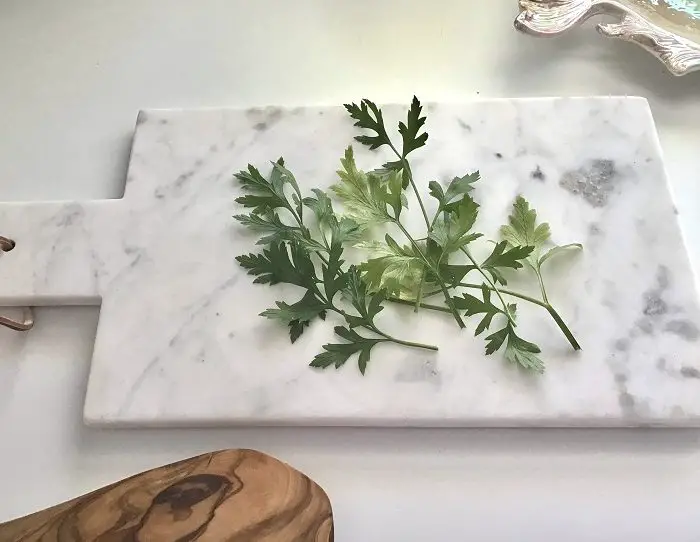
How Should You Pot & Move Your Herbs Indoors For The Winter?
Choose Your Container Size
If your herbs are not already planted in containers, you can easily transplant them from the ground into an appropriately sized container. A good rule of thumb to estimate the correct container size for your herbs is to choose a container that has a diameter that is about half the size of a full-grown plant. For instance, a coriander plant that is expected to grow to 20 inches should be happy in a pot that is about 10-inches in diameter.
Choose Well-Draining Soil
Make sure your potted herbs have good drainage by selecting potting mix that includes some large particulates mixed in such as perlite. And, of course, be sure to drill a drainage hole in your pots if they don’t already have them.
Before You Bring Any Herbs Indoors Inspect Them For Insects
Of course, before bringing any plants inside that have spent any time out in the garden with all manner of creepy-crawlies, make sure to check for signs of pests.
Eradicate Pests Before Bringing Herbs Indoors
If you see any, combat pests with a few sprays of a simple soapy water solution you can easily make and bottle at home. It won’t harm your plant and should eradicate any pests before they get indoors.
TIP! When You Dig Up Your Herbs, Use This Opportunity To “Refresh” Your Garden Soil
If you have herbs that you are digging out of the ground to pot and bring inside, use this opportunity to feed your garden nutrients in the form of compost. Doing this in the fall ensures that your garden will be nutrient-dense and fertile when spring arrives. This prepares the soil for a future crop of healthier, more nutritious plants.

Challenges Of Growing An Indoor Herb Garden
The shorter days of winter coupled with bone-dry indoor air are enough to send even the hardiest shade and drought-tolerant plant into hibernation for the long, “dark” season. Take heart, though, because there are a few things you can do to make your herbs think summer never left…
How To Combat Low Indoor Winter Light
Shorter winter days and corresponding lower light levels take its toll on all of us. Your herbs are no exception. To combat low light “fatigue” for your herbs, be sure to place your indoor herb garden on or near a bright, sunny window-sill. Southern-facing windows will provide the most hours of sunlight. Of course, if you have a lot of herbs, you may want to invest in a plant stand that can accommodate all your herbs’ varying light needs, with basil, parsley and chives placed on the shelf closest to the window and more shade-tolerant herbs like mint placed on a lower shelf.
Consider Grow Lights
If you live far up North or lack bright windows in your home, you may want to consider adding an artificial light if needed.
Hydration, Humidity & Pest-Control Indoors
Satisfy your herbs’ hydration needs but be careful not to overwater your plants during the slow growing season. When the soil feels dry below the surface, you can safely water.
As noted above, some perennials require a rest period with less water. Without it, they will shed their leaves and stop growing. To encourage future growth, you can reduce watering by 50 percent or more until you spot new growth beginning.
Lower indoor humidity levels can also be the bane of an indoor herb garden — and not just because of the dry air. Certain indoor pests like spider mites, flies, and aphids actually thrive in dry, low-humidity indoor air.
Combat Dry Indoor Air
To combat dropping humidity levels, try grouping your plants together and adding gravel to the saucers of each pot. Each time you water, any excess that drains out will fill the spaces between the gravel, helping to boost humidity levels just around the plants. Of course, if you notice any pests, you can ward them off with a spray of soapy water which should keep pest populations down without harming your plants with unnecessary chemicals.
********
Do you grow an indoor kitchen herb garden during the winter? Share what you like best about having an herb garden year ’round in the comments…


You May Also Like

Frosted, Whipped Lemonade Like Chick-fil-A But Better: A Lemonade Creamsicle Made Naturally
July 22, 2021
Can You Write Your Own Will? Plus, Why You Need A Will Even If You Think You Don’t
January 13, 2022